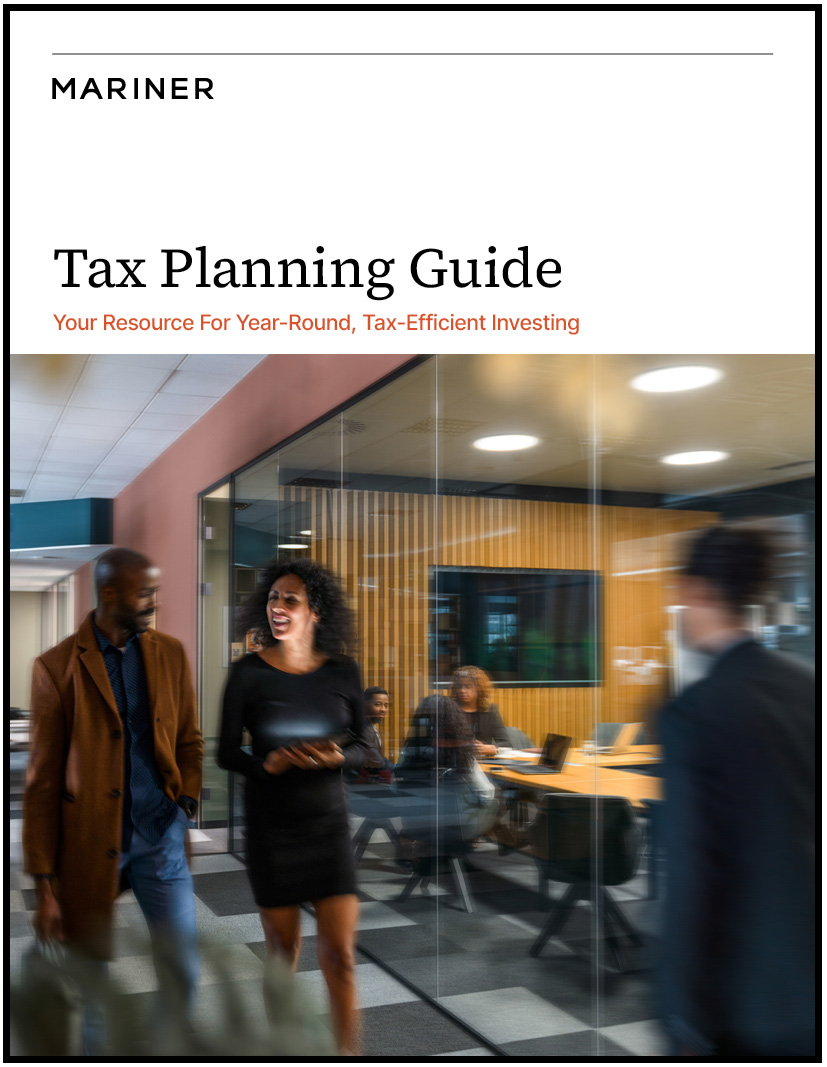Year-end Planning: 5 Strategies to Maximize Savings While Reducing Your Taxable Income
As the year wraps up, you’ve most likely met with your wealth advisor about tax- advantaged moves to make by Dec. 31. You still have time to max out retirement savings and employ proactive strategies that can help minimize the taxes you’ll owe next year. Plus, you can leverage these strategies as you set wealth goals for 2025.
5 Proactive Year-end Planning Strategies:
- Maximize Retirement Plan Contributions
- Converting a Traditional IRA to a Roth IRA
- Give to Charitable Organizations
- Gift Monetary Assets
- Harvest Investment Tax Losses
1. Maximize Retirement Plan Contributions
If you participate in an employer-sponsored retirement plan like a 401(k) or 403(b), you can contribute up to $23,000 in 2024 ($23,500 in 2025). Those age 50 and older can make “catch-up” contributions of $7,500 ($7,500 in 2025), for a total of $30,500 this year ($31,000 in 2025). Note that employer matching 401(k) contributions don’t count toward the limits, and combined employee and employer contributions can’t exceed $69,000 in 2024 ($76,500 with catch-up) and $70,000 in 2025 ($77,500 with catch-up).1
Unlike 401(k) and 403(b) contributions, which must be made at the end of each plan year, you can contribute to your IRA until next year’s April tax filing deadline. The 2024 and 2025 contribution limit for traditional and Roth IRAs is $7,000, or $8,000 for individuals age 50 or older.2
2. Converting a Traditional IRA to a Roth IRA
If you’ve been thinking about converting a portion or all of your traditional IRA to a Roth IRA, this may be an opportune time to do so depending on your personal situation. Although the funds you convert are treated as a taxable distribution, they grow tax free, and qualified distributions are also exempt from taxes. What’s more, required minimum distribution rules don’t apply to Roth IRAs.
It’s a good idea to pay the tax due on the conversion from sources other than your IRA to keep your retirement assets invested and working for you.
3. Give to Charitable Organizations
With increases in the standard deduction, some may find it makes more sense not to itemize, so you’ll want to consult with your tax professional about your individual situation. However, if you’re close to the standard deduction of $14,600 for single filers in 2024 ($15,000 in 2025) and $29,200 for joint filers ($30,000 in 2025)3, you might consider “bunching” charitable contributions.
A bunching strategy allows you to make larger contributions less often, for example, every other year, to exceed your deduction limit and potentially benefit from an additional deduction that year. A donor-advised fund can be an effective tool for bunching charitable contributions, offering an immediate tax benefit and the opportunity to defer your decision of which eligible charity will be the beneficiary of the funds.
Individuals age 70½ and older can also make qualified charitable contributions of up to $105,000 annually from their IRAs directly to qualified charities.4
4. Gift Monetary Assets
Another strategy to reduce your taxable estate is to give monetary gifts by year-end. In 2024, you can gift up to $18,000 ($19,000 in 2025) tax free to an individual without it counting against your lifetime gift tax exemption. That lifetime exemption, which this year is $13.61 million for single filers ($13.99 million in 2025) and $24.12 million for joint filers, allows you to maximize the wealth you transfer to heirs.5
Parents and grandparents may wish to support a child’s education by making monetary gifts to 529 plans. Not only do the funds in these plans grow tax deferred over time, but they also can be withdrawn tax free to pay for the child’s qualified educational costs. Gifts to a 529 plan in 2024 are subject to the $18,000 annual exclusion amount ($19,000 in 2025). However, a unique feature of these plans enables donors to front-load accounts with up to five years’ worth of gifts, or $90,000 per person in 2024 ($95,000 in 2025).
You’ll want to work with your advisor to make sure any gifting strategy you’re considering is coordinated with your overall wealth plan.
5. Harvest Investment Tax Losses
It’s wise to take advantage of opportunities to potentially cut your tax bill by selling assets that have lost value to offset realized capital gains—a strategy called tax-loss harvesting. If your capital losses are greater than your capital gains, you could deduct up to $3,000 of the excess loss against other income, and any remaining capital losses could be carried forward.
Note that if you want to repurchase a security you sold at a loss or buy one defined as “substantially identical” by the IRS within 30 days of selling it, your loss will be disallowed under the IRS’s wash-sale rule.
Tax Guide: Your Resource for Year-round Tax-Efficient Investing Year-round planning with an advisor could help improve your overall wealth plan. Find out more by downloading our tax guide.
Meet With Your Advisor
Before the year is out, it’s important to meet with your advisor to review your wealth plan and opportunities to minimize your tax burden. At Mariner, our in-house tax professionals can collaborate with your advisor to implement proactive planning strategies that make sense for you.
Sources:
1-2 “401(k) limit increases to $23,500 for 2025”
3 “IRS releases tax inflation adjustments for tax year 2025”
4 “What is a qualified charitable distribution?”
This article is provided for informational and educational purposes only. It does not consider any individual or personal financial, legal, or tax circumstances. As such, the information contained herein is not intended and should not be construed as individualized advice or recommendation of any kind. Where specific advice is necessary or appropriate, individuals should contact their professional tax, legal, and investment advisors or other professionals regarding their circumstances and needs.
Any opinions expressed herein are subject to change without notice. The information provided herein is believed to be reliable, but we do not guarantee accuracy, timeliness, or completeness. It is provided “as is” without any express or implied warranties.
There is no assurance that any investment, plan, or strategy will be successful. Investing involves risk, including the possible loss of principal. Past performance does not guarantee future results, and nothing herein should be interpreted as an indication of future performance.
A Roth conversion is complex, and it is an irrevocable election. Once you process a Roth conversion, you cannot undo the conversion and tax impact. Before initiating a Roth conversion, please consult with a financial and tax professional to fully understand the financial impact and to ensure you consider all your available options, including applicable taxes, fees, and features of each before moving your retirement assets. Withdrawals from a Roth IRA are tax free if you are over age 59½ and have held the account for at least five years; withdrawals taken prior to age 59½ or five years may be subject to ordinary income tax or a 10% federal penalty tax, or both.
Investors should consider the investment objectives, risks, charges, and expenses associated with 529 plans before investing. More information about specific 529 plans is available in each issuer’s official statement, which should be read carefully before investing. If you withdraw money for anything that doesn’t meet the qualified expense criteria, any part of the distribution that is made up of earnings on contributions will be taxed as ordinary income and could incur a 10% federal penalty.
Mariner is the marketing name for the financial services businesses of Mariner Wealth Advisors, LLC and its subsidiaries. Investment advisory services are provided through the brands Mariner Wealth, Mariner Independent, Mariner Institutional, Mariner Ultra, and Mariner Workplace, each of which is a business name of the registered investment advisory entities of Mariner. For additional information about each of the registered investment advisory entities of Mariner, including fees and services, please contact Mariner or refer to each entity’s Form ADV Part 2A, which is available on the Investment Adviser Public Disclosure website. Registration of an investment adviser does not imply a certain level of skill or training.

